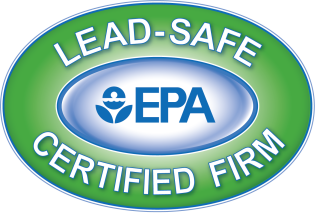Poke your head inside your basement or crawl space. Do you see a white substance on the foundation walls? About once a week we receive a call from someone claiming to have white mold on the foundation walls in their basement or crawl space.
The thing is, that white substance isn’t mold, it’s efflorescence. Keep reading to find out why efflorescence may indicate that you have, or will likely have, a mold problem in your home.
What is Efflorescence?
Efflorescence is a white, powdery substance left behind when water containing minerals evaporates. Water picks up minerals as it moves through brick, stucco, and concrete, including poured concrete and concrete blocks. These minerals are left behind on the surface once the water evaporates. Efflorescence is commonly made up of gypsum, salt, or calcite. It’s most common in environments with high humidity, like crawl spaces and basements.
Efflorescence, although unsightly, is not harmful. The minerals don’t harm the surface on which they are deposited, and efflorescence poses no specific health concerns. The bigger concern is what efflorescence represents.
Why Do I Have Efflorescence?
If you have efflorescence, it’s an indication that water is moving through your foundation, and that your basement or crawl space is humid. The water may be wicking up into the foundation from groundwater in the soil below, or by lateral movement through the foundation walls.
Both of these scenarios are problematic, and if not addressed, may cause structural issues over time. Water moving under or through your home’s foundation will eventually weaken the foundation. This can lead to settling, cracking, and more problems.
Efflorescence is an Indication of Humid Air
In order for efflorescence to develop, water must evaporate from a surface. This water vapor accumulates in the air inside your basement or crawl space, further elevating the humidity level of the already damp, stagnant air.
Humid air inside a basement or crawl space will inevitably lead to mold growth, starting with the wood floor joists, subfloor, and paper face of floor insulation. Relative humidity around 60% and above will support mold growth and lead to musty odors.
What To Do About Efflorescence
To reduce humidity in the basement, you may approach the problem with an appropriate dehumidifier in addition to proper ventilation and air conditioning, but these solutions treat the symptoms of moisture, not the cause. Because efflorescence may indicate conditions that lead to structural damage, it may be time to seek a professional assessment.
At Branch Environmental, we provide comprehensive packages that address the air quality inside your home and basement. We have you covered, from prevention to inspection to mold remediation.
Call us today at (706) 310-0097 if you would like to schedule a basement assessment, crawl space inspection, or indoor air quality inspection!

